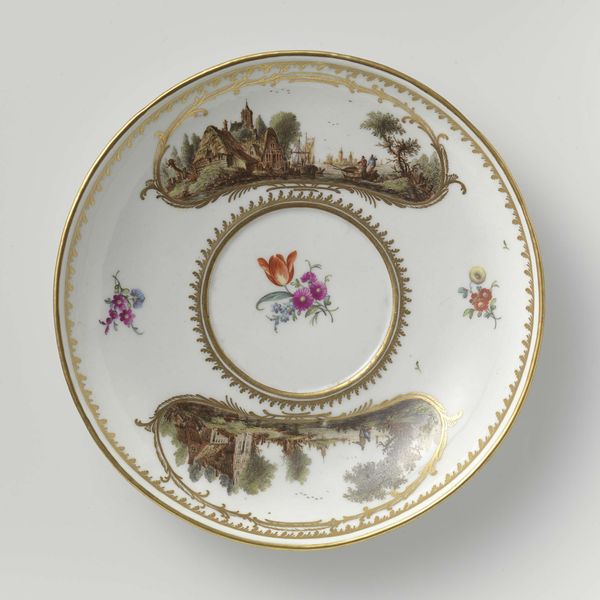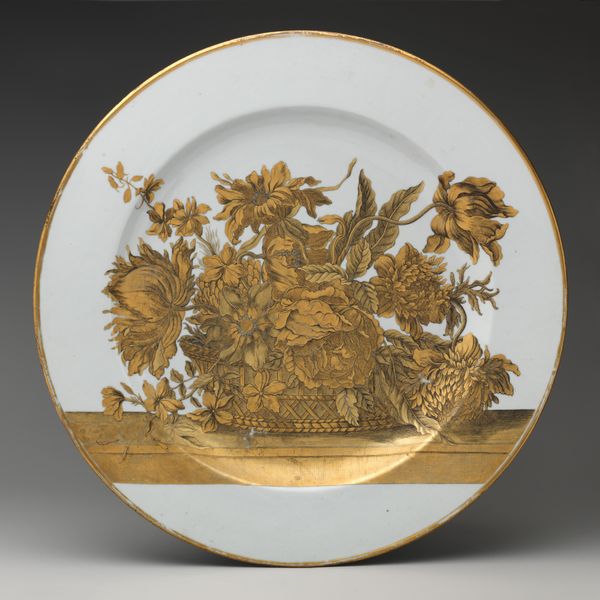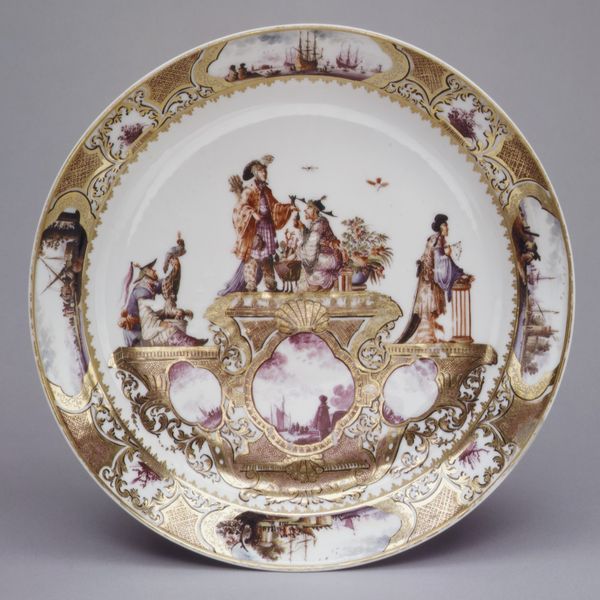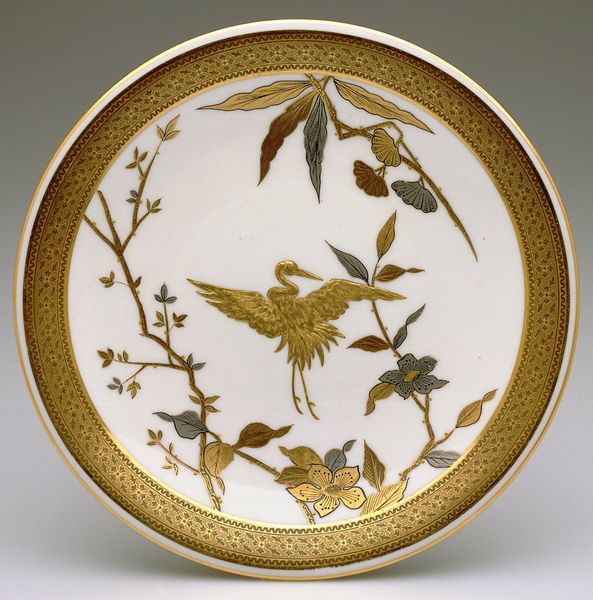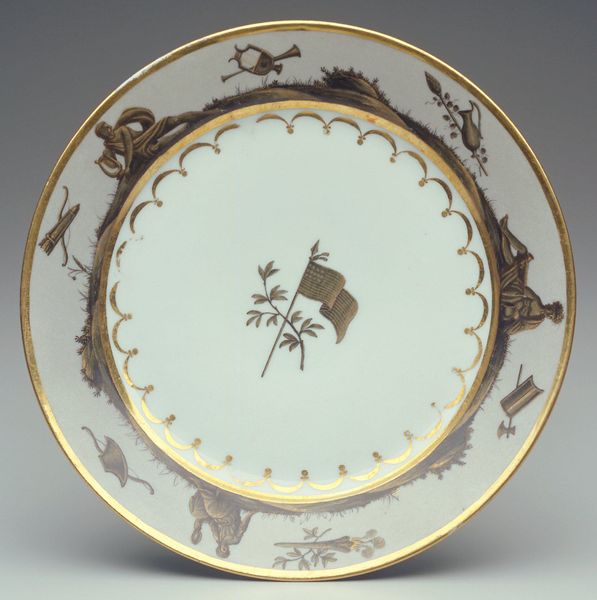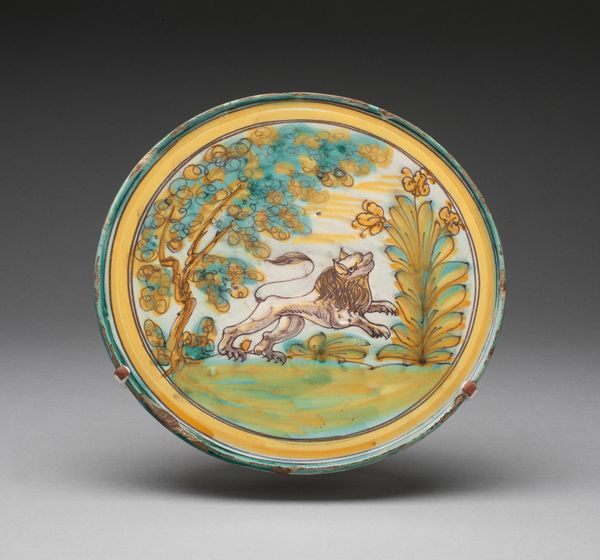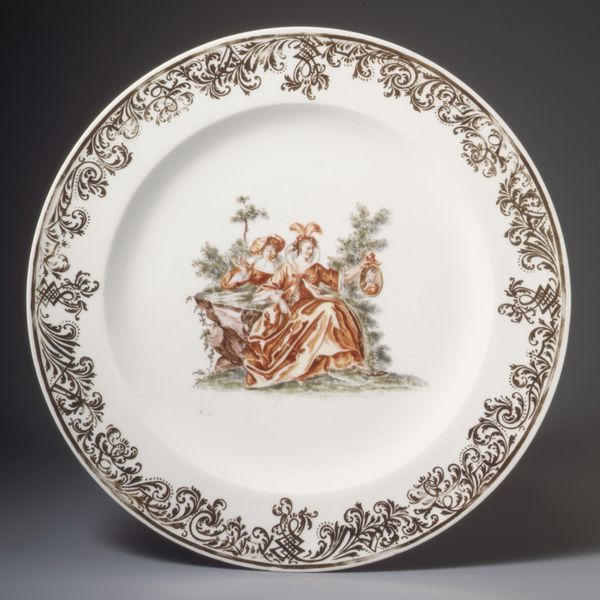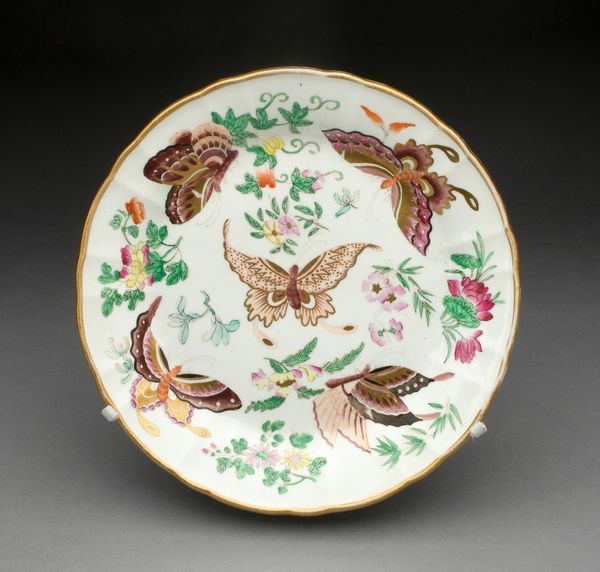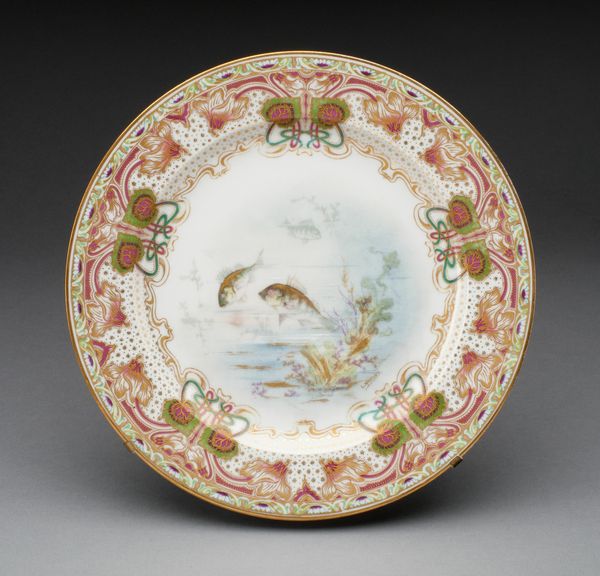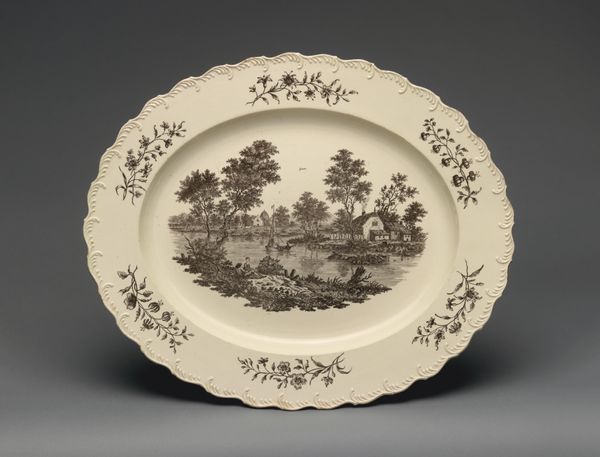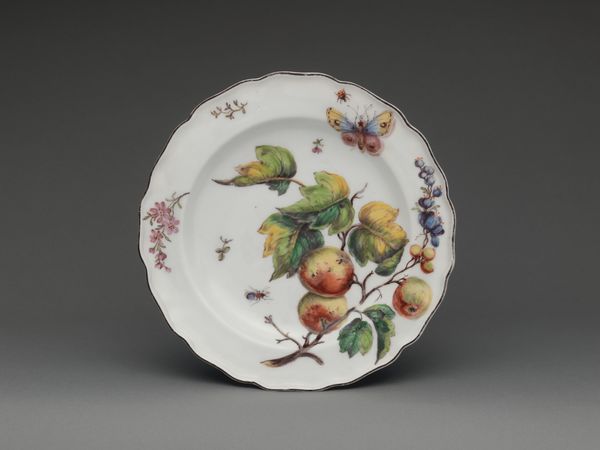
ceramic, porcelain, sculpture, engraving
#
baroque
#
ceramic
#
porcelain
#
sculpture
#
ceramic
#
decorative-art
#
engraving
Dimensions: Overall: 1 3/4 × 15 in. (4.4 × 38.1 cm)
Copyright: Public Domain
Editor: This is "Plate (one of a pair)," made between 1730 and 1745, currently residing at The Met. It's a beautiful example of decorative art, made of porcelain. I’m really drawn to the monochromatic scheme of gold against the white plate; it gives it a very elegant and luxurious feel. How would you interpret this piece purely based on its visual elements? Curator: From a formalist perspective, this plate presents a fascinating interplay between the two-dimensional surface and the illusion of three-dimensionality created by the engraved floral arrangement. The gold detailing, acting almost as a sophisticated trompe-l'oeil, contrasts sharply against the pristine white porcelain, emphasizing its material properties. Notice how the artist meticulously rendered the botanical forms and the basket. The composition has almost baroque-esque dense detail and high contrast; do you see how the forms push to exceed their border on the plate? Editor: Absolutely, there's a tension between the defined circular space and the almost overflowing abundance of the flowers. It is contained, yet simultaneously expansive. So, without thinking of any external context, you're focusing on how the composition itself generates meaning? Curator: Precisely. It's about understanding how line, texture, and the arrangement of shapes within the given space work together. The plate's circular form interacts dynamically with the organic, asymmetrical composition of the engraved design. Even the subtly imperfect rim adds to the richness. The intention appears to celebrate symmetry and elegance through contrast. Editor: I never really thought about a plate this way, deconstructing its internal visual relationships. I'll definitely look closer at decorative art pieces going forward, beyond their function! Curator: Indeed. By engaging with its intrinsic properties, you will unlock a new layer of aesthetic appreciation of objects that have long traditions in our culture.
Comments
No comments
Be the first to comment and join the conversation on the ultimate creative platform.
